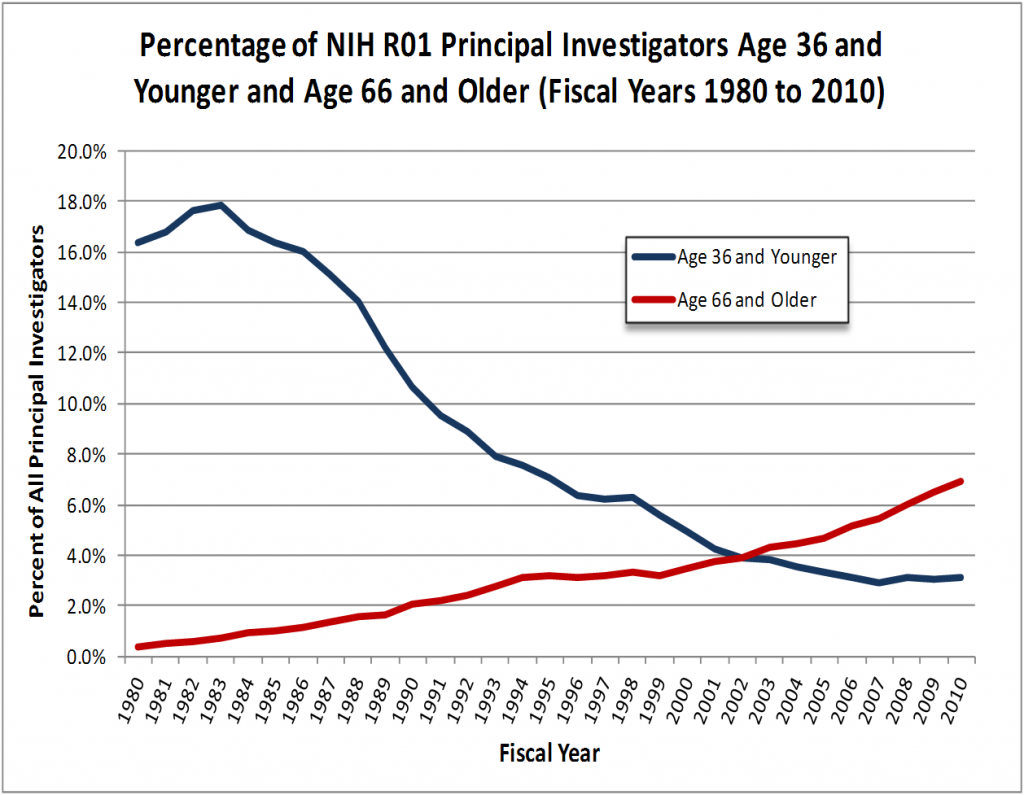Science Funding: Aging Researchers and Funding Recipients
Here is a video produced by Sally Rockey and her team showing changes in age distribution of NIH Principal Investigators and medical school faculty. Rockey is NIH’s Deputy Director for Extramural Research, serving as the principal scientific leader and advisor to the NIH Director on the NIH extramural research program. The video compares the average age of NIH PIs to the age of faculty in medical schools over the years 1980-2009. Since about 55% of R01* recipients are in medical schools, this provides an interesting comparison of the faculty age, and the age of the funded faculty, and how this distribution has changed over the years. In 1980 the distribution both of funding and of faculty age was skewed toward the younger faculty, with a lower median age. Over time, the distribution becomes less skewed, with a higher median age which is also closer to the mean age.
Two other things that jump out:
In 1980, less than 1% of PIs were over age 65, and now PIs over age 65 constitute nearly 7% of the total. In parallel, in 1980, close to 18% of all PIs were age 36 and under. That number has fallen to about 3% in recent years.
Also:
Another factor that jumps out is the increasing gap between entry into faculty and receipt of the first R01. Although not all AAMC faculty members apply for NIH research grants, the gap is interesting and suggests that institutions and other non-NIH funding sources are increasingly responsible for research start-up costs.
You can read more in the full Rock Talk. Also, Drugmonkey outlines a five-point plan to fix the aging funded faculty problem.
——————-
* An R01 is the main vehicle for funding single labs by the NIH. It is typically a 5 year renewable grant.
Comments are closed.



















